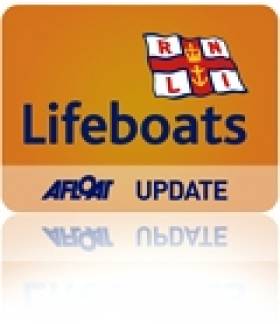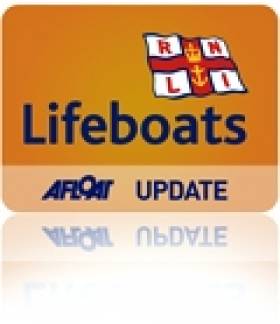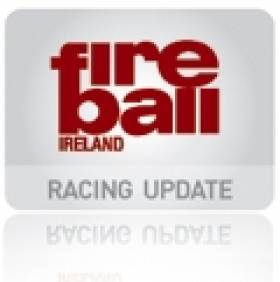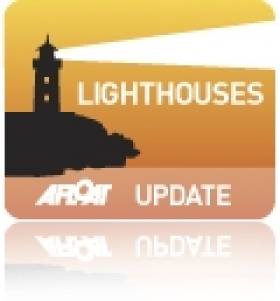Displaying items by tag: Wexford
Wexford RNLI to Name New Inshore Lifeboat Alfred William Newman
A new D class lifeboat for Wexford RNLI is to be officially named Alfred William Newman during a ceremony at the lifeboat station in the town centre at 2pm tomorrow, Saturday 26 September. The lifeboat which went on service in June was funded by Alfred William Newman who, through a bequest in his Will, provided the D class lifeboat to enable crews to continue Wexford RNLI’s lifesaving service.
The RNLI which has strong links throughout Ireland with the Commissioner of Irish Lights has asked Chief Executive Yvonne Shields, to have the honour of naming the new lifeboat at the station during tomorrow’s event.
Nick Bowie, Wexford RNLI Lifeboat Operations Manager is looking forward to the naming ceremony. He said: ‘As the Operations Manager here, it’s a proud and satisfying moment to see the crew get such a capable rescue water craft. As well as celebrating the naming of this lifeboat, this event gives us the chance to say a warm thank you to the donor, Alfred William Newman whose generous bequest funded the lifeboat.’
The RNLI formally established a lifeboat station in Wexford in 2002 but its lifeboating history goes back some 77 years prior to that.
The original Wexford Lifeboat Station, located at the Fort at the mouth of Wexford Harbour was opened in 1838. It had two lifeboats on station, one for the offshore waters and a smaller lifeboat for the shallower waters of the harbour. Severe storms decimated the Fort village and its linking causeway in 1925 and the larger lifeboat had to be temporarily stationed at Wexford Quay. She was eventually permanently re-stationed at Rosslare Harbour, leaving the local boating community in Wexford to deal with emergencies within their harbour.
Many years later in 1993, following the tragic drowning of Paddy Busher, a local group was mustered to establish Wexford Harbour Inshore Rescue as a declared maritime emergency resource for Wexford Harbour and their lifeboat was named Paddy Busher. In 2002 this service formally became part of the RNLI.
The D class lifeboat has been the workhouse of the RNLI’s lifesaving service for nearly 50 years. It is inflatable but robust; highly manoeuvrable and capable of operating much closer to shore than all-weather lifeboats. It is specifically suited to surf, shallow water and confined locations, often close to cliffs, among rocks or even in caves.
First introduced to the fleet in 1963, the design of the D class has continued to evolve since its introduction and the latest version was introduced in 2003. As with all D class lifeboats, the Alfred William Newman has a single 50hp outboard engine and can be righted manually by the crew after a capsize. Onboard equipment includes both fitted and hand-held VHF radios, night-vision equipment, and first aid kit, including oxygen.
The 5m lifeboat is tractor launched and has a 25knot maximum speed. It can carry up to three lifeboat crew and five survivors.
Wexford Lifeboats Assist Two After Yacht Breakdown
#RNLI - Volunteer lifeboat crew from Wexford and Rosslare Harbour RNLI launched on Sunday (14 June) to go to the assistance of two people onboard a 37ft yacht which got into difficulty off Wexford’s east coast.
Wexford RNLI launched their inshore lifeboat first at 4.30pm following reports that a yacht had suffered engine failure two miles south west of Raven’s Point. They then requested the assistance of their colleagues at Rosslare Harbour RNLI who subsequently launched their all-weather lifeboat.
Weather conditions at the time were described as good with a Force 5-6 northerly wind blowing. The sea was calm and there was good visibility.
The Wexford lifeboat, helmed by Lorraine Galvin and with crew members Simon Gulliver and Martin Conway onboard, arrived on scene at 5pm. Gulliver, who is also Wexford RNLI’s station mechanic, boarded the yacht and assessed the situation.
After inspection, Gulliver was able to get the fuel system working again and ran the boat for 10 minutes to ensure the vessel was operating smoothly. Rosslare Harbour RNLI stood by meanwhile, ready to assist if required. Following the checks, the yacht was able to continue on its journey.
Speaking following the callout, Galvin said: "We were delighted to be able to assist the two people who got into difficulty on their yacht today.
"Simon’s skills as mechanic paid off as he successfully managed to get the yacht back underway and in doing so avoided a lengthy tow back to shore."
London Natural History Museum's New Blue Whale Display Has Irish Origins
#MarineWildlife - News emerged this week that Dippy, the famous diplodocus cast at the entrance of London's Natural History Museum, is to be replaced with the skeleton of a blue whale.
But amid all the hubbub that this move has sparked, perhaps little known is the replacement creature's Irish origin.
According to Geographical, the magazine of the Royal Geographic Society, the museum's blue whale skeleton is from a female whale that was beached off Wexford more than 100 years ago.
The giant marine mammal was reportedly already injured when it washed up at Wexford Harbour in 1891, says whaling expert Phillip Hoare, who notes that the museum paid £250 (some £27,000 in today's money) for the carcass – which produced an incredible 630 gallons of valuable whale oil.
That rendering was done at the museum itself, which had a 'whale pit' reserved for such purposes till the 1940s, when complaints from the neighbours about the smell put paid to that practice.
What's more, the Wexford whale that will have pride of place in the museum's atrium is just one of countless other specimens acquired over the decades, many of which are stores in a warehouse in south London.
Geographical has more on the story HERE.
Man Dies In Quad Bike Accident On Wexford Beach
#Wexford - The Wexford People reports on the death of a man in his early 50s after a quad bike accident on Ballinesker Beach in Curracloe yesterday afternoon (23 December).
The man was reported missing in the afternoon and found on the beach late in the evening with fatal injuries, with a post-mortem scheduled to take place today.
Irish Coast Guard helicopter Rescue 117, the local coastguard unit, gardaí and other volunteers were involved in the search for the deceased.
Wexford Lifeboat Recovers Man's Body From Town Harbour
#Wexford - Wexford RNLI recovered the body of man last night (Saturday 22 November) following a 90-minute search operation after reports of a man who had fallen from his boat at the Crescent at Wexford Quay.
The lifeboat launched at 4.23pm seconds after the alert by the Irish Coast Guard. Its volunteer lifeboat crew were already in their full kit with the lifeboat on the slip as they had just come back to the station following an exercise.
Within a minute the lifeboat was on scene, where they were given reports of the person's location. A lifeboat crew member entered the water and the crew performed extensive searching of the area, assisted by local vessels from Wexford Harbour Boat and Tennis Club.
Coastguard helicopter Rescue 117, Rosslare and Curracloe Coast Guard and Garda units joined in the search, with divers from Slaney Search and Rescue arriving on scene when the man's body was found.
Wexford RNLI lifeboat crew recovered the casualty at 6.10pm and brought him back to Wexford lifeboat station.
The Irish Times reports that the man is thought to have lost his footing while on a boat and slipped into the water.
Wexford Lifeboat Rescues Two From Water In Early Hours
#RNLI - Two people were rescued by Wexford RNLI in the early hours of Friday morning (3 October) after one was seen entering the water in the county town's harbour and another, a trained lifeguard, entered to assist.
- The volunteer crew was alerted at 1.29am and the lifeboat launched within six minutes of the pagers going off.
Both men were rescued alongside Wexford Quay and brought back to Wexford lifeboat station, where a HSE ambulance was waiting.
Speaking after the incident, a spokesperson for Wexford RNLI said: "The quick response by the lifeguard, Gardaí and lifeboat saved lives last night.
"If anyone see someone in distress in the water they should ring the coastguard on 112 or 999 which will ensure the fastest response by the Wexford lifeboat."
#fireball – The 16-boat Fireball fleet for the Munsters have had a very challenging 4 race programme today with light variable winds and lots of snakes and ladders racing writes Cormac Bradley. Very few boats don't have one big number on their scorecard and Noel Butler & Stephen Oram (15061) are the only boat in the top five who don't. A 3, 3, 2, 2 score line leaves them in 2nd place behind Barry McCartin & Conor Kinsella (15114) who have scored 1, 6, 1, 4. In third place we find Kenneth Rumball & David Moran (15058) with a 8, 4, 4, 3 record for the day.
Ben Scallan & Ronan Wallace of the home club, sailing 14820 are fourth with a 4, 1, 7, 8 return and fifth overall is Andrew Boyle & Alexander Rumball who won the last race of the day to add to their 5, 9, 13 tally.
#RNLI - Wexford RNLI came to the rescue of a woman who sustained a leg injury off the Point of Park yesterday (Friday 20 June).
The lifeboat launched at 11.44am and was on scene at 11.47am. Volunteer lifeboat crew member Matt Crispin, who is also an advanced paramedic, administered first aid on the lifeboat.
The woman was then brought to Wexford lifeboat station before being transferred to a HSE ambulance and taken to Wexford General Hospital.
- RNLI helm David Maguire commented on the skills of the volunteer lifeboat crew: "With an advanced paramedic and three advanced first aid crew on board, the woman was in safe hands."
Crew on the call-out included helm David Maguire, Matt Crispin, Frank O'Brien and Martin Conway.
Elsewhere, it was a busy Thursday evening for Lough Ree RNLI on 19 June when they received three lifeboat callouts in succession.
The first call for help was made at 4.25pm by a sailing boat standing by a cruiser on the rocks on the Long Shoal. The Lough Ree lifeboat was launched at 4.33pm and was on scene 10 minutes later.
The casualty was a 38ft cruiser with two adults and three children on board. The cruiser was refloated and checked over. There was no damage and she continued on passage with two other craft in convoy.
The volunteer crew had just finished preparing the Dorothy Mary for continued service when another call-out was received at 5.20pm by the Irish Coast Guard for a cruiser aground in Blackbrink Bay.
The lifeboat was launched at 5.23pm and was on scene at 5.39pm. This time the casualty was a 32ft cruiser with five adults on board. She was refloated and examined and was able to continue her journey.
A third and final callout was received at 7.25pm, and concerned a speedboat with two adults and three children on board that had broken down while crossing the lake from Hodson Bay.
The lifeboat was launched at 7.30pm and was on scene 15 minutes later. One adult and the three children were taken on board the Dorothy Mary, which then towed the casualty, and the remaining adult, back to Hodson Bay, departing the scene at 8.21pm.
After dropping the speedboat and her party, the lifeboat crew carried out a training exercise that had been planned for that evening, arriving back at the station at 9.20pm.
Wexford Maritime Festival, One of Ireland's Largest Sea Themed Events, Starts on June 27
#maritimefestival – Beachgoers to Curracloe today enjoyed the spectacle of 'Two men in a boat' as the launch for Wexford Maritime Festival got underway. The Wexford Maritime Festival was established in 2012 to celebrate Wexford's rich maritime heritage and culture and has attracted over 50,000 each year making it one of the country's biggest maritime celebrations.
The festival takes place on Wexford Quay from June 27 to 29 and the organisers of this year's jam-packed programme are expecting large crowds of over 50,000. This festival honours the memory of the founder the US Navy Commodore John Barry in his hometown of Wexford - known in the U.S. as 'Father of the American Navy.
The annual Irish Marine Search and Rescue conference and exercise demonstration will take place during the festival with heads of all Irish rescue organisations including the Irish Coast Guard, RNLI, Navy, Air Corps, HSE, Garda Siochana, Civil Defence, Irish Mountain Rescue Association, Harbour authorities, Irish Cave Rescue organization and lifeguards attending their conference on Friday.
On Saturday a major air and sea rescue demonstration will take place in full view of Wexford quay commencing with a formation of the Air Corps Casa fixed wing aircraft and Air Corp Augusta Westland 139 helicopter and the new Irish Coast Guard S92 Rescue 117. A series of 5 rescue scenarios will be demonstrated including the dropping of a life-raft from the Casa aircraft and rescue by RNLI lifeboats plus a first aid evacuation off a boat by the HSE maritime ambulance response team who will winch to a deck of a fishing trawler by the air corps helicopter.
Festival Director, Lorraine Galvin explained the emergency services connection with the festival "The Wexford Maritime Festival is organised by local Wexford RNLI crew with special events to raise money for Wexford Lifeboats. This year we are remembering the 100th anniversary of the Mexico disaster with a special maritime display by Rosslare Maritime Museum and the largest gathering of rescue organisations on Wexford quay this year."
The free family fun festival with lots of great children's activities including science workshops, arts and Viking activities and a new kid's boat stage called after Commodore Barry's most prominent ship, the USS Alliance, will come alive on Wexford quay with kids discos and games. Great art and colouring competitions with the winners getting a trip in Rescue 117 helicopter!
Wexford Food Family are going bigger and better this year with more local producers, chef demonstrations and outdoor seating area in view of the main stage where County Wexfords best performers will play live all weekend. There's lots of great water fun and races with raft races, rowing and sailing, a try it dock to try kayaking, canoeing, water skiing and a free try a dive. The largest Irish and UK model boat and aircraft display across England and Ireland with a specially constructed pond for remote control driving.
Speaking at the launch, Director David Maguire stressed the great community involvement, "The Wexford Maritime Festival showcases the very best of Wexford's maritime activities and heritage along with great local food on an amazing setting overlooking Wexfords expansive harbour. More and more local groups are coming on board each year to show off what's great about Wexford."
With over 40 events, free activities and attractions, Wexford quay is the place to be
Take A Virtual Tour Of Hook Head Lighthouse
#Lighthouses - The world's oldest operational lighthouse is worth a visit for any tourists in the Sunny Southeast, but now anyone can take a virtual tour of the Hook Head lighthouse from the comfort of their own home - or anywhere, if you're using a laptop!
Placed at the top of Lonely Planet's list of the 'Top 10 Flashiest Lighthouses', the Hook Head light has been opened to the public as a tourist attraction each year since 2001, and is a great spot for watching whales and dolphins.
Now the breathtaking view afforded from the top of this towering fixture of the Wexford coastline can be seen from anywhere in the world. Click HERE to see for yourself!





































































